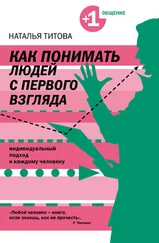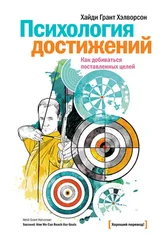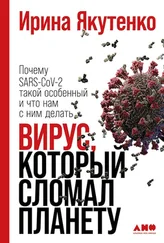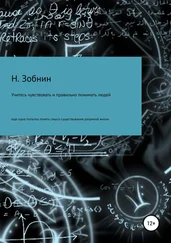A. J. Cuddy, Susan T. Fiske, and P. Glick, “Warmth and Competence as Universal Dimensions of Social Perception: The Stereotype Content Model and the BIAS Map”, in Advances in Experimental Social Psychology, vol. 40, ed. M. P. Zanna (New York: Academic Press, 2008), 61–149.
C. M. Judd, L. James-Hawkins, V. Yzerbyt, and Y. Kashima, “Fundamental Dimensions of Social Judgment: Understanding the Relations Between Judgments of Competence and Warmth”, Journal of Personality and Social Psychology 89 (2005): 899–913.
D. Adams, Dirk Gently’s Holistic Detective Agency (New York: Simon & Schuster, 1987).
J. C. Magee and P. K. Smith, “The Social Distance Theory of Power”, Personality and Social Psychology Review 17, no. 2 (2013): 158–186.
C. Anderson and A. D. Galinsky, “Power, Optimism, and Risk Taking”, European Journal of Social Psychology 36 , no. 4 (2006): 511–536.
P. K. Piff et al., “Higher Social Class Predicts Increased Unethical Behavior”, Proceedings of the National Academy of Sciences 109 , no. 11 (2012): 4086–4091.
J. Hogeveen, M. Inzlicht, and S. S. Obhi, “Power Changes How the Brain Responds to Others”, Journal of Experimental Psychology: General 143 , no. 2 (2014): 755–762.
S. A. Goodwin et al., “Power Can Bias Impression Processes: Stereotyping Subordinates by Default and by Design”, Group Processes and Intergroup Relations 3, no. 3 (2000): 227–256.
S. A. Goodwin et al., “Power Can Bias Impression Processes: Stereotyping Subordinates by Default and by Design”, Group Processes and Intergroup Relations 3, no. 3 (2000): 227–256.
R. Rodríguez-Bail о n, M. Moya, and V. Yzerbyt, “Cuando el poder ostentado es inmerecido: sus efectos sobre la percepci о n y los juicios sociales” [When power is undeserved: its effects on perception and social judgments], Psicothema 18 , no. 2 (2006): 194–199.
J. R. Overbeck and B. Park, “Powerful Perceivers, Powerless Objects: Flexibility of Powerholders’ Social Attention”, Organizational Behavior and Human Decision Processes 99, no. 2 (2006): 227–243.
M. Agthe, M. Spörrle, and J. K. Maner, “Does Being Attractive Always Help? Positive and Negative Effects of Attractiveness on Social Decision Making”, Personality and Social Psychology Bulletin 37, no. 8 (2011): 1042–1054.
M. Agthe, M. Spörrle, and J. K. Maner, “Does Being Attractive Always Help? Positive and Negative Effects of Attractiveness on Social Decision Making”, Personality and Social Psychology Bulletin 37, no. 8 (2011): 1042–1054.
N. D. Weinstein, “Unrealistic Optimism About Susceptibility to Health Problems”, Journal of Behavioral Medicine 5, no. 4 (1982): 441–460.
Д. Майерс. Социальная психология. – СПб.: Питер, 2016.
A. Tesser, M. Millar, and J. Moore, “Some Affective Consequences of Social Comparison and Reflection Processes: The Pain and Pleasure of Being Close”, Journal of Personality and Social Psychology 54, no. 1 (1988): 49.
M. Hewstone, M. Rubin, and H. Willis, “Intergroup Bias”, Annual Review of Psychology 53, no. 1 (2002): 575–604.
S. Fein and S. J. Spencer, “Prejudice as Self-Image Maintenance: Affirming the Self through Derogating Others”, Journal of Personality and Social Psychology 73 , no. 1 (1997): 31.
Чалдини Р., Мартин С., Гольдштейн Н. Психология убеждения. 50 доказанных способов быть убедительным. – М.: Манн, Иванов и Фербер, 2013.
R. B. Cialdini and K. D. Richardson, “Two Indirect Tactics of Image Management: Basking and Blasting”, Journal of Personality and Social Psychology 39 , no. 3 (1980): 406.
Ari Emanuel, quoted in E. Bumiller, “The Brothers Emanuel”, New York Times, June 15, 1997.
Квотербек – позиция игрока команды нападения в американском и канадском футболе. Прим. ред.
H. Tajfel and J. C. Turner, “The Social Identity Theory of Intergroup Behavior”, in Political Psychology : Key Readings, eds. J. T. Jost and J. Sidanius (New York: Psychology Press, 2004).
H. Tajfel, “Social Psychology of Intergroup Relations”, Annual Review of Psychology 33 , no. 1 (1982): 1–39.
E. T. Higgins, “Promotion and Prevention: Regulatory Focus as a Motivational Principle”, A dvances in Experimental Social Psychology 30 (1998): 1–46.
Х. Г. Хэлворсон, Т. Хиггинс. Психология мотивации. Как глубинные установки влияют на наши желания и поступки. – М.: Манн, Иванов и Фербер, 2014.
P. B. Baltes, U. M. Staudinger, and U. Lindenberger, “Lifespan Psychology: Theory and Application to Intellectual Functioning”, Annual Review of Psychology 50 , no. 1 (1999): 471–507.
E. N. Higgins, J. Shah and R. Friedman, “Emotional Response to Goal Attainment: Strength of Regulatory Focus as Moderator”, Journal of Personality and Social Psychology 72 , no. 3 (1997): 515.
D. Van Dijk and A. N. Kluger, “Feedback Sign Effect on Motivation: Is It Moderated by Regulatory Focus?” A pplied Psychology 53 , no. 1 (2004): 113–135.
H. Plessner et al., “Regulatory Fit as a Determinant of Sport Performance: How to Succeed in a Soccer Penalty-Shooting”, Psychology of Sport and Exercise 10 , no. 1 (2009): 108–115.
H. Plessner et al., “Regulatory Fit as a Determinant of Sport Performance: How to Succeed in a Soccer Penalty-Shooting”, Psychology of Sport and Exercise 10 , no. 1 (2009): 108–115.
Спок – персонаж научно-фантастического телесериала «Звездный путь» (Star Trek), известный своей безэмоциональностью и рассудительностью. Прим. ред.
V. K. Bohns et al., “Opposites Fit: Regulatory Focus Complementarity and Relationship Well-Being”, Social Cognition 31, no. 1 (2013): 1–14.
J. Cesario, H. Grant, and E. T. Higgins, “Regulatory Fit and Persuasion: Transfer from ‘Feeling Right’”, J ournal of Personality and Social Psychology 86, no. 3 (2004): 388.
J. Bowlby, A Secure Base: Parent-Child Attachment and Healthy Human Development (New York: Basic Books, 1988).
Читать дальше
Конец ознакомительного отрывка
Купить книгу












